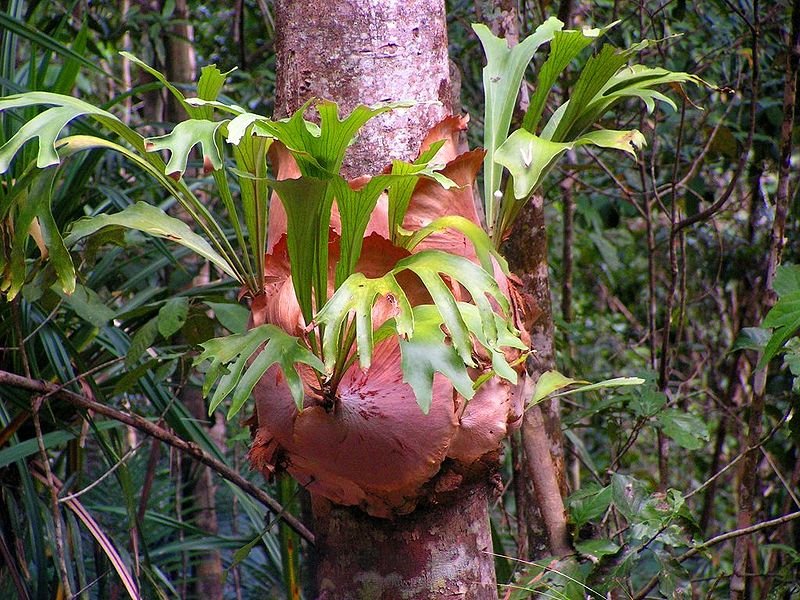Friday Fellow: Elkhorn Fern by Piter Kehoma Bol
Native from Java to Australia, the elkhorn fern and all other species of the genus Platycerium have a very out-of-the-ordinary appearance for a fern. Growing as an epiphyte, the elkhorn fern has two types of fronds (leaves): basal fronds and fertile fronds.
The fertile fronds are elongate and forked and grow away from the roots, reaching up to 90 cm in length. They often have a grayish-green color. In mature fronds, the long lobes from their bifurcation bear the sporangia, which are clustered in brownish sori.
A specimen growing on a Casuarina glauca tree in Australia. Photo by Peter Woodard.I was not able to find information about the ecological interactions of the elkhorn fern. Who eats it? How does its presence affect the performance of the host plant? Does it have a preferred substrate to grow in its native habitat? For such a popular plant, we seem to know very little about its relevance in the wild.– – –Like us on Facebook!Follow us on Twitter!– – –References:Wikipedia. Platycerium. Available at < https://en.wikipedia.org/wiki/Platycerium >. Access on 24 september 2020.Wikipedia. Platycerium bifurcatum. Available at < https://en.wikipedia.org/wiki/Platycerium_bifurcatum >. Access on 24 september 2020.Rut G, Krupa J, Miszalski Z, Rzepka A, Ślesak I (2008) Crassulacean acid metabolism in the epiphytic fern Patycerium bifurcatum. Photosynthetica 46:156. https://doi.org/10.1007/s11099-008-0026-8– – –*
Publicado en Artículos.

 An old specimen of elkhorn fern in Queensland, Australia. Photo by
An old specimen of elkhorn fern in Queensland, Australia. Photo by  A baby specimen. Photo by Wikimedia user Calvinal*.
A baby specimen. Photo by Wikimedia user Calvinal*. Fertiles leaves with the brown mark of the sori on the underside. Photo by Wikimedia user
Fertiles leaves with the brown mark of the sori on the underside. Photo by Wikimedia user